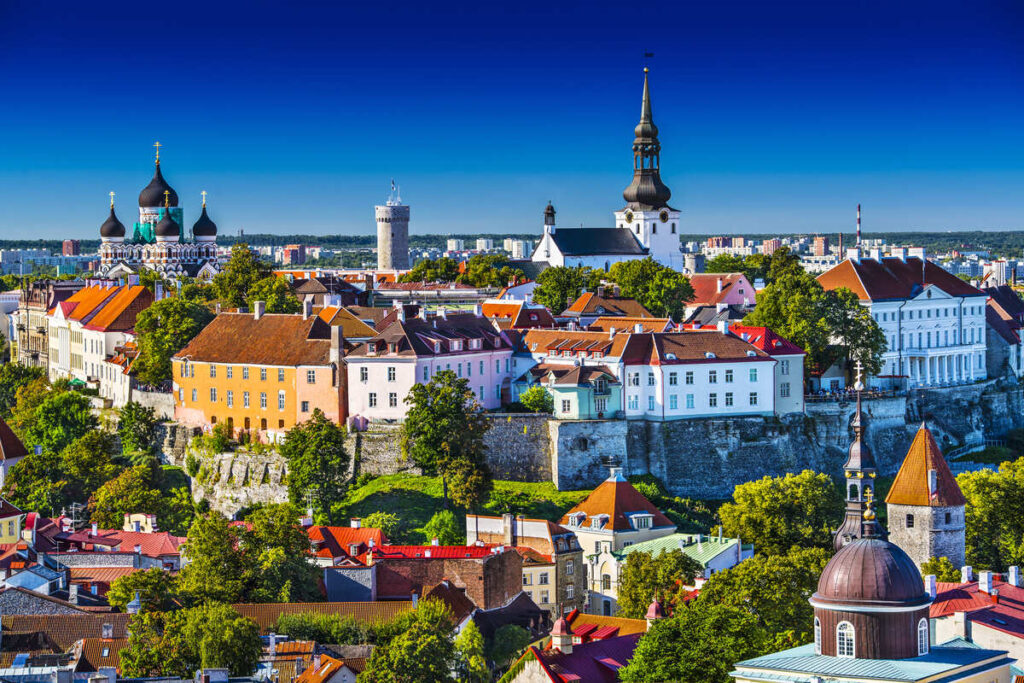Travel Guide
Avoid The Crowds This Summer In This Tiny European Country With Medieval Cities
Last Updated
Home to Disney-like castles (except they’re the real deal), cobbled towns that almost don’t look real, and boasting an invaluable heritage dating back several millennia, Europe is on every traveler’s radar this summer, particularly culture-hungry Americans.


Between France’s stately Belle époque cityscapes and all the Gaudí masterpieces scattered around Barcelona, it’s not like their options are exactly limited; be that as it may, there are parts of the continent that continue to be largely overlooked by most.
One such example is Estonia, a tiny country in a lesser-known part of Northern Europe that is yet to be overwhelmed by tourism, and psst!… it’s not as if it suffers from a shortage of gorgeous medieval cities, either:
Welcome To Estonia
And Its Stunning UNESCO-Protected Medieval Capital


Estonia is a small Northern European state straddling the Baltic Coast, and though it is not as popular as France or Spain, and certainly not as warm as its Southern counterparts, it has a rich History spanning millennia and a lot to offer on the tourism front.
For starters, it has Tallinn for capital, that which is a UNESCO World Heritage Site recognized for its well-preserved historic core, virtually unchanged since the Middle Ages, as well as an exciting city home to a lively social scene and vibrant artsy districts.


A maze of picturesque narrow alleys, Old Town Tallinn is surrounded by defensive walls, connected by a complex system of ramparts, towers, and fortifications that have kept the city protected from assailants throughout History.
It’s where tourists will find the 14th century Town Hall, the gorgeous St Olaf’s Church, whose towering spire dominates the skyline, Toompea Castle on a hilltop, now housing the Parliament of Estonia, and Viru Gate, guarding the city’s entrance for over 700 years now.


The Old town is a literal open-air museum, with cobble-laden lanes leading towards medieval squares, hidden courtyards, and centuries-old street markets where traditional Estonian food is served, but Tallinn is so much more than that:
Away from the medieval zone, it is a fast-growing metropolis that could easily belong in America, with all the clusters of skyscrapers, modernist, innovative developments, and of course, the riotous nightlife: the coolest district of Tallinn is, in fact, outside the touristy center.


Telliskivi, or Creative City, is a Bohemian area full of bars, youth-frequented cafés, and unique interventions, from protest art to some of the most Instagrammable murals you’ve ever seen—picture the Berlin Wall, but with far fewer tourists.
There Are Smaller Crowds In Tallinn
That’s the beauty of Estonia: as it’s not a transitory country ‘on the way’ somewhere like the Czech Republic or Hungary, smaller crowds gather here compared to other Eastern European capitals that have experienced a Tourism Renaissance in recent years.


Last year, only 4 million foreigners landed here, with most guests visiting Tallinn as a day trip—something we definitely don’t recommend as you can barely scratch the surface—or only staying overnight, and we haven’t even touched on other Estonian destinations yet.
Much like Finland or Sweden, Estonia is not your typical summer destination—let’s face it, these mildly warm, at times chilly Baltic summers are not everyone’s idea of fun—but it can be a great alternative to a tourist-packed, scorching-hot Southern Europe.


In a way, it’s the perfect antithesis to Dubrovnik: it’s coastal, it has a fairytale Old Town, it’s just as beautiful, yet it’s unlikely to be as unpleasantly-warm or overwhelmed by tourists come July, and then there is an entire wider country to explore.
Why Is Estonia More Than Just A Day Trip?
The second largest city in Estonia after Tallinn, Tartu is officially a Cultural Capital of Europe this year, famous for its neoclassical university, elegant, cafe-lined central square, landmark ruined cathedral, and most importantly, the Estonian Song Festivals.


They are some of the largest choral events in the world, and have been classified by UNESCO a Masterpiece of the Oral and Intangible Heritage of Humanity; the next festivals are only taking place, however, in 2025 following a five-year gap.
Estonia’s resort city, Pärnu is the main settlement on Pärnu Bay, where golden sands meet the gelid Baltic, and it’s characterized by charming timber villas, modern sea promenade, and luxurious spa hotels costing from $83 per night to book.


Estonia is not the cheapest Eastern European destination, with the euro as national currency and consumer prices being the highest among the Baltic states, but it’s still relatively affordable, with a one-week stay costing $765 including food, transportation and accommodation.
Covering an area of 747 km², the densely-forested Lahemaa is the go-to spot for wildlife enthusiasts, a short 40-minute drive from Tallinn, and notorious for being the first designated national park not only in Estonia but the entire former Soviet Union (of which it was a part of).


Estonia also administers a number of islands in the Baltic Sea, known for their sandy beaches—though you shouldn’t expect waters as warm as the Mediterranean this far north—spa towns and quaint, traditional villages.
The largest of them is Saaremaa, with a culture distinct from the Estonian mainland, and both a natural reserve and historical site: from hiking trails reaching isolated lighthouses to monumental medieval castles, you’ll find it all here.
Estonia Is Among The Safest Countries In Europe


Other than its nature and manmade wonders, Estonia is among the safest European destinations: yes, it borders Russia and Belarus, self-declared enemies of the Western World, but it is a stable member of the European Union, and it’s protected under the NATO treaties.
In terms of urban safety, illegal immigration, known to disrupt peace in major European capitals like London and Paris, is low as Estonia is not a primary destination for economic migrants, and crime is practically non-existent, or it occurs in negligible levels.


Terrorist attacks are uncommon, and even pickpocketing is not widespread, leading Washington to assign a Level 1 status to Estonia as a whole: in other words, it is as safe as neighboring Finland and much of the Nordic group, including Norway and Iceland.
Visit The Other Baltic States Of Europe
If you’re flying all the way to Europe this summer, you’re likely to want to include more than a single country in your itinerary, and we’re glad to inform you that Estonia can be visited either as a stand-alone destination or as part of a multi-destination trip.


It is part of the Baltic states, meaning it offers bus and train connections to destinations across Latvia and Lithuania—two to five hours away—and it’s linked to Helsinki, in Finland, and Stockholm, in Sweden via ferry.
Lux Express tickets from Tallinn to Riga, capital of Latvia, or Vilnius, capital of Lithuania, are as cheap as $19, and buses are extremely comfortable, with leather-clad, reclining seats, and airplane-style private screens with a selection of new film releases.


Finland is the easiest country to travel to from Tallinn, with ferries departing from the main port hourly and taking roughly 2h30 to complete the crossing, costing an affordable $34 when booked in advance, while ferries to Stockholm take longer (17 hours) and cost more (from $120).
There are no nonstop routes from the United States to Estonia, and the easiest way to get there is by flying into Europe via a third country hosting Transatlantic flights.
The most obvious option is Finland, as it sits just across the Baltic Sea and there are multiple Tallinn-bound ferries in operation.
↓ Elevate Your Travel↓
Sign Up Now For Travel Off Path Premium! No ads, VIP Content, Personal Travel Concierge, Huge Savings, Daily Deals, Members Forum & More!


✈️Join Our Travel Off Path Community Forum: Where travelers unite, ask questions, share experiences and even find like-minded travel buddies!
SUBSCRIBE TO OUR LATEST POSTS
Enter your email address to subscribe to Travel Off Path’s latest breaking travel news, straight to your inbox.
This article originally appeared on TravelOffPath.com
Opinions expressed here are the author’s alone, not those of any bank, credit card issuer, hotel, airline, or other entity. This content has not been reviewed, approved or otherwise endorsed by any of the entities included within the post.

